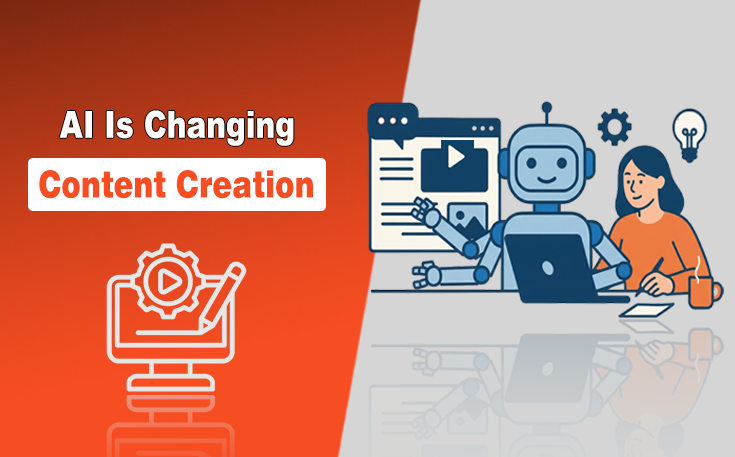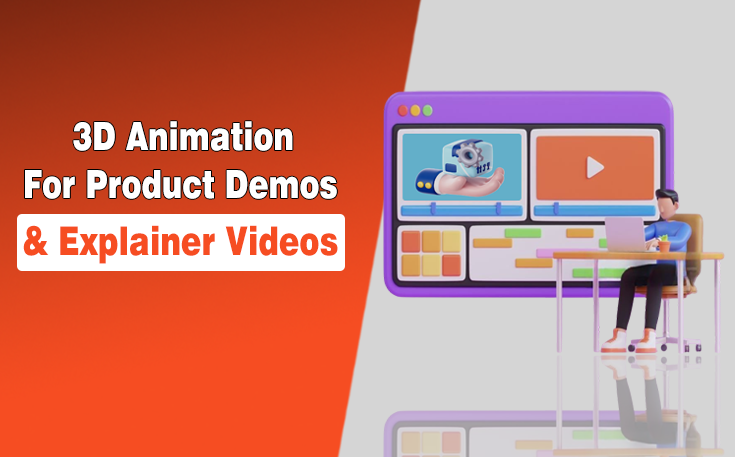Many developers face multiple issues associated with web development procedures. And the reason behind it is the use of conventional methods. Previously, these tactics were quite effective. But now, being a developer, you can’t meet the modern world’s demands without using the potential of AI tools for web development.
In this fast paced world, everything is associated with AI. Previously, Artificial Intelligence was considered for the tech sector only. But now, the business, transport, and education sectors are also getting transformed by it. Further, AI agents in healthcare are also playing crucial roles as they reduce the workload of administration.
Ultimately, you can use the potential of AI for web development. However, if you don’t know which tools are the best to enhance your workflow, then you don’t have to worry anymore. I am creating this blog post to mention the top 10 AI tools for web development. Now, just learn their features and determine which of them is the most suitable one.
Top 10 AI Tools for Web Development
Being someone who has spent time developing websites and setting the bugs in the already developed platforms, I know how challenging it is to write lengthy code. And the most critical part is making them error free. Because only one mistake makes you review the whole work, which is not only hectic but also time consuming.
AI tools for web development are the best solution nowadays as they can assist in writing lengthy code without making errors. A large number of developers and web development companies are using them to meet the modern pace. And if you are still not pocketing their potential, you are way behind.
But that doesn’t mean you go to the web and start using the tool that comes up first. You need to do some research to make sure it offers the features you require. And what’s worse is that the big collection of such tools has made it challenging to pick one.
So, to assist you in this crucial task, I have enlisted and explained the top 10 best AI tools for web development in the undersection.
- GitHub Copilot
- Claude AI
- Grok
- ChatGPT
- OpenAI Codex
- Uizard
- DeepSeek
- CanvaCode
- Divi AI
- WixADI
1. GitHub Copilot

GitHub Copilot is an AI model created by GitHub. It is created to assist programmers in coding. It works like a chatbot in which you just have to prompt your requirement, and it will perform the task.
Many teams also leverage these tools not only for web development but for mobile apps development, using AI to streamline code generation and bug debugging across mobile platforms.
All of this happens by its integration with the code editor you are using, for example, VS Code. It will generate the code according to the scenario you have commanded it to create. It can even debug the code if you allot that task to it.
| Pros | Cons |
|---|---|
| IDE integration | Code quality varies |
| Adaptive | Privacy concerns |
| Wide framework support | Potential of Errors |
2. Claude

Claude is an AI model introduced by Anthropic AI. It has different models, and the most powerful of them is the “Claude 3.7 sonnet”, which outperforms in an extreme manner.
Claude is ranked among the top on the leaderboard of “Webdev arena”. If you have to select a tool for web development, then it is way more efficient than others. Even you can export code with a single click and execute it.
| Pros | Cons |
|---|---|
| User-friendly interface | Privacy concerns |
| Real-time responses | Biased in such cases |
| Scalability | Dependent on a high-quality prompt |
3. Grok

Grok is one of the most powerful AI tools created by Elon Musk. It is backed and integrated by strong platforms like X and Tesla. It is also available on multiple apps like Telegram, which has a standalone appearance.
Unlike the other tools, Grok also offers accuracy in its free plan. It also includes a download feature from which you can export all of your data or responses.
| Pros | Cons |
|---|---|
| The most updated one | Limits to 10 messages in the free plan |
| Less censorship | Fewer third-party integrations |
| Powered by a 2.7 trillion parameter model | Ethical Concerns |
4. ChatGPT

ChatGPT is a large language model introduced by OpenAI. It has a free version available for everyone named ChatGPT3.5. Besides being one of the leading AI tools for marketing professionals, this platform has worked as a game changer for coding.
ChatGPT has multiple models, and each of them is designed for specific purposes. You just have to specify what kind of page or site is required, and it will generate the code, even showing a preview of it, so you will be able to edit the design as needed.
| Pros | Cons |
|---|---|
| Efficient and Fast | Ethical concerns |
| 24/7 Support availability | Biased and censored |
| Multilingual | Data can be outdated |
5. OpenAI Codex

“OpenAI” has also launched another platform besides “ChatGPT”, which is the “Codex”, an LLM model. It is a text-to-code platform, so you just have to prompt whatever you have to code, and the rest of it will be done automatically.
It has the ability to code by understanding natural language styles. You don’t have to be complex with the terminology. Just use the language you speak in everyday life, and you will be able to operate the entire setup.
| Pros | Cons |
|---|---|
| Deep understanding and smooth. | No free plan |
| Efficient workflows | No cross-referencing |
| Mobile friendly | Markup language is “Scriba” |
6. Uizard

If you wanna have some comfy features, then you should remember “Uizard”. It is a prompt-based tool with enormous features that are not easily available everywhere. Its key features include mockup creation, webpage creation, and many others.
The most interesting feature is its wireframe scanner, which can transform your handwritten design into digital ones in no time. You can export your design in the React file and then transform the code into other languages if needed.
| Pros | Cons |
|---|---|
| Fast performance | Unexpected errors |
| Intuitive performance | Not very user-friendly |
| Drag and drop editor | Complex advanced functions |
7. DeepSeek

As we all know, China is ruling the economy of the whole world, and now it has also introduced an AI model. And it is called “DeepSeek”. The main purpose behind its creation is the solution of complex tasks, including mathematics, coding and problem solving.
It has various models for multiple tasks, such as “DeepSeek coder”, which is specifically built for programming-related tasks and code generation. It takes more time than others to respond, but this also reflects its efficiency in data collection and accuracy.
| Pros | Cons |
|---|---|
| Accurate performance | Security concerns |
| Multilingual functionality | Server issues |
| Advanced coding | Less integrations |
8. CanvaCode

Previously, Canva was a platform only for designing visuals like social posts, sample videos and others. But now it has also introduced a platform for web development purposes, and its name is “CanvaCode”.
This new tool makes it different from the other tools for creating infographics as it is capable of creating great visuals, and if you’re not satisfied in any case, you can redesign it by just adding another prompt, and it will get redesigned.
| Pros | Cons |
|---|---|
| Advanced customisation | Can’t Export Code |
| Great Visual Creation | Sometimes gets Slow |
| Less debugging ratio | No phone support |
9. Divi AI

If you want another prompt-based tool that provides a UI to simply write down a command prompt, then remember “DiviAI”. It can automatically generate the whole site or a specific page according to the desired command. It is capable of generating images, writing content, and even coding for you.
With its auto-generation feature, you can generate the whole code with a single click if you are a developer who works with custom-code sites. It can generate customised CSS and can design or redesign the site inside the builder, and also has a grip over other LLMs as well.
| Pros | Cons |
|---|---|
| Responsive Editing | Limitations of different CMS. |
| Theme Builder | Optimising issues. |
| Visual Builder | Compatibility concerns |
10. WixADI

If you want a simple interface for development purposes, then WixADI is very magnificent in that way. As its abbreviation is “Artificial Designing Intelligence”, it does not mean that you only have to use it for the designing of websites.
It is a command-based tool that provides you with a beautiful UI where you have to put in your prompt according to the website you need. The further processing will be done automatically. It is not a code-based tool; you just have to drag and drop the widget as the building blocks for the site.
| Pros | Cons |
|---|---|
| User-friendly interface | No analytics in the free plan |
| Generates mobile-friendly sites | Expensive paid plans |
| No code needed | Storage limits on all plans |
Final Thoughts
One of the main things that I have learned during this whole time is that these AI tools for web development have great potential to enhance the development domain. The only thing that matters is their effective use, and they are like sharks now for the low-level developers.
However, the most important thing is that they are just tools. So, there is no chance that these can do all the work by themselves, because intent and creativity are the main things, and for that, there will always be a need for someone to steer the ship. For that, you should always have your own workspace.
Need custom app with amazing features?
Get a Quote




